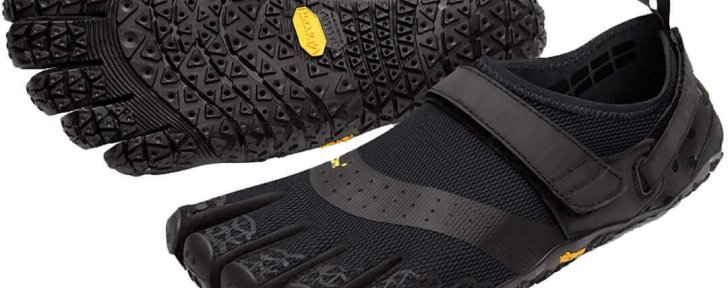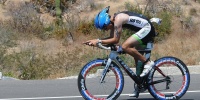Minimalist shoe : definition, reflection, understanding
Par LaurentPublié le 20/08/2019 à 17h04 — modifié le 23/08/2023 à 13h31 Temps de lecture : 4 minutes

Why is there so much talk about the minimalist shoe in running? It is really a subject in fashion for a few years... A subject in fashion and which is debatable since the definition of minimalism in running and its interest is far from being shared by all ! I am closely following the major players in the promotion of minimalist footwear and their detractors. Today I would like to give you an objective summary of everyone's arguments. And above all, to help you better understand what minimalism really is so that you can form your own opinion!
The origins of the minimalist stroke
If the minimalist shoe and the barefoot run are fashionable subjects in recent years... Yet this subject is as old as the world! East Africans have long run barefoot... Many young people still do so before entering structures that give them the means to have shoes. The world record of the Adebe Bikila marathon held in 1960 at the Olympic Games in Rome was achieved barefoot... In 2h15! Running at nearly 19km/h without shoes for 42km is therefore possible! Is that what we should recommend today... While remaining objective, I will not promote extremes and I would tell you that I will not!
Definition of the minimalist shoe
While the definition of a minimalist shoe is absolutely unofficial, we agree that it should reproduce as much as possible the feeling one would have when running barefoot/ barefoot. If you want to get an idea of extreme minimalism, just try running a few dozen meters barefoot. The feeling is totally different from the one we have in our classic running, right?
Well, that's the whole debate. The shoe has its interest in protecting our fragile foot. We have always been used to shoes, if running barefoot is possible, it would take a long time to get used to them. Our muscles, joints and foot skin in particular would need a lot of progressiveness... And clearly for me who lives in Quebec... in winter, it's not an option anyway, even dogs are allowed to wear small socks ! ????
The criteria for defining a minimalist shoe
According to my research, specialists in minimalist footwear agree on the concrete criteria that define it. The most active and complete site on this subject is in Quebec and is called La Clinique du Coureur. Directed and animated in the 4 corners of the world by the physiotherapist Blaise Dubois, it gives us these 5 criteria. Criteria that will define the minimalism index of a shoe. In the end, the index gives 100% to an ultra-minimalist shoe and 0% to a shoe that would be the opposite (see the search tool here).
- The thickness of the sole to the heel
Some soles are around 5mm, just what it takes to make an interface between the foot and the ground, without interfering with the natural movement of the foot. Many shoes are above or well above 20mm and form a kind of cushion under the foot to protect it from ground impacts. The thicker the sole is, the less we feel the ground and therefore the less our proprioceptive capacities are used.
- The drop / difference in height between the heel and the front of the shoe
The thickness from the sole to the heel is one thing, but the drop, or difference in height at the heel and forefoot, is a major criterion. The foot is flat on the ground without shoes, so the drop of the shoes creates a new movement for the foot. Shoes with 0 drop or limited to 4mm drop are nowadays very present. But the major players are still around 10mm of drop on average today (it was often much more 15 years ago so there was an evolution!).
- The weight
Running shoes range from 100g for the lightest to over 400g for the heaviest (for the same standard size 42). Every gram added to the foot changes the running mechanics. Lester the foot is slowing down its dynamics. On this side too, modern technologies have made it possible to significantly reduce the weight of shoes. The average was until recently around 300g. Today we find many shoes around 250g and very often between 250 and 300g. Far from minimalist shoes and their barely 100g.
- Flexibility
The foot functions as a spring that is able to release a large part of the energy that is transmitted to the ground at the time of impact. The minimalist shoe is very flexible to let the foot control the movement on the ground and use its qualities for a better bounce. And the less flexible the shoe is, the less the foot can move naturally. It is then the shoe that controls the movement and dynamics of the stride.
- The presence of a stride control system
We all have a different stride, a different foot position. OEMs therefore add control systems (by stiffening this or that part of the shoe, using foams with different densities to block certain movements, etc...). The goal is to standardize the stride and prevent it from deviating from what they have defined as the most effective and least injurious.
Objective opinion on the minimalist shoe
I will now devote myself to the exercise of analyzing the positive / negative points of the minimalist shoe, am I legitimate to do that? Will I be objective? I think so, yes! I've been running for 15 years and I've tried everything. I knew the shoes with the cushioning and impressive control that were sold to us at that time as a must. It has to be said that on this side, equipment manufacturers are nowadays a little more discreet about stride control technologies. Because of the emergence of minimalism in the debate? Fifteen years ago, the subject of the minimalist shoe was unknown to the battalion for almost all runners. Today, not everyone knows what it is, but the majority have at least heard about minimalism.
So I've been testing pretty much everything that can be done in the shoe market for the past 15 years. A minimalist shoe without any debate with the Five Fingers V-Run (whose full test is coming soon), intermediate shoes like the Nike Free or on the contrary extreme shoes like the Hoka One One One... Extreme shoes that take up some codes of minimalism like the weak drop! Or simply more classic shoes like Nike's Pegasus. Today, there is everything on the market, equipment manufacturers and experts clearly do not all agree... Minimalism is a divisive subject... And one that risks continuing to divide for a long time to come!
Less injuries with the minimalist shoe?
Very good question. This has long been the argument of the pro minimalist shoes... And also of their detractors... The subject is therefore complex! Especially since today, scientific studies show that the arguments given by both parties are valid! The minimalist shoe as the maximalist shoe will allow to relieve the body... In different areas! The minimalist shoe seems to reduce tension on the back, hip and knee for example. Will the maximumist shoe relieve tension on the foot and Achilles tendon....
But be careful because an important point comes to taint this analysis... The adaptation to the minimalist shoe! Because if on the whole, the minimalist shoe seems to generate fewer injuries in runners who are used to it... It's the opposite for those who want to make a transition to the minimalist shoe! Because the main reason is probably due to a badly made / too fast transition by the riders concerned... This shows that the argument of at least injury with the minimalist shoe is more complicated to prove than it seems.
More performance with the minimalist shoe ?
Interesting point and which has evolved in recent years with some very interesting studies. The number one criterion that makes one shoe more efficient than another is above all its weight. You can see it regularly in my tests, I associate light shoes with dynamism and speed... It is confirmed in the studies. On the other hand, it would seem that the rule "The lighter the shoe, the faster it goes" is not totally true.
There would be a weight limit around 220g from which more performance gains would be observed. This is interesting because it is exactly the weight of a shoe like the Adidas Adios Boost that has proven, with successive marathon world records, to be a very effective shoe. In fact, the ideal for performance would not be the extreme minimalist shoe. Instead, we would choose an intermediate shoe that offers lightness combined with a little stiffness to make maximum use of the rebound on the ground.
So minimalist shoe or not ?
As I told you, I will be objective in this article. The reason is simple, I don't have a fixed opinion on the minimalist shoe. She has many interests, I was able to test it in real life. However, the transition and long-term adoption of a minimalist shoe is not easy. If beginners in running might have an interest in starting quietly, very gradually with a minimalist shoe... For experienced runners it's another story! The interest of the minimalist transition only exists if it is perfectly realized... Which means taking the time to do it and potentially devoting 6 months of your training time to it.
In the end, having tested all these types of shoes, I would say that without going to an extreme minimalist shoe like the FiveFingers... Trying to move slowly to a less maximalist shoe can't hurt... But rather than spending time making a minimalist transition, experienced runners should especially spend more time working on the running technique! Strengthening your foot and putting it in a shoe that has a little less "control" over your stride can have very positive effects without putting you at risk of injury.







